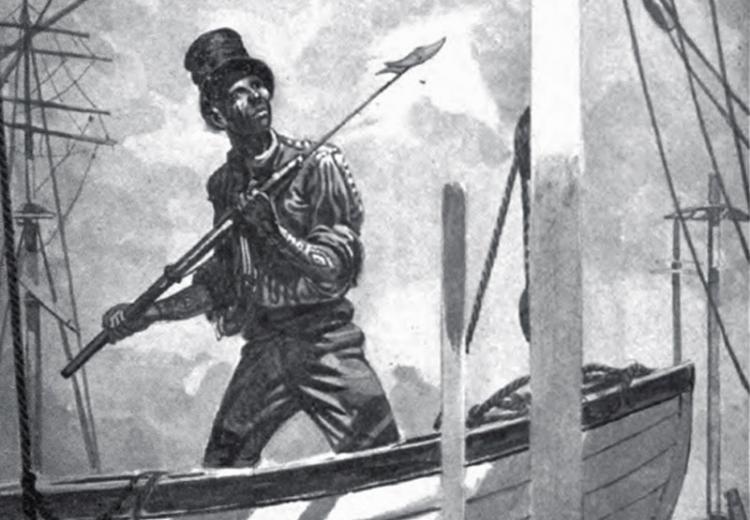Lesson 1: Narrative Voice in Moby Dick

Illustration of Queequeg and his harpoon.
Melville opens Moby-Dick with a firm command from narrator to reader, “Call me Ishmael.” He then goes on to weave a tale through Ishmael’s first-person narration as a seeming bystander telling the story of the white whale. Even as the whale ship the Pequod takes to the sea, the narrative is very firmly Ishmael’s. Ahab is literally nowhere to be found; the captain remains “invisibly enshrined within his cabin.”
Melville positions Ishmael as a character who believes in the “Fates,” three female figures from classical myth who control one’s destiny from birth to death. The tension between man’s free will and a pre-determined destiny is a major theme for Melville—one his characters must grapple with throughout the novel.
In this lesson, students perform a guided close reading of the opening chapter to analyze the voice of the first-person narrator. Students work to understand Melville’s characterization of Ishmael and then return to a short excerpt from chapter 1 to consider his attitude toward the Fates. Follow-up questions serve as a guide to the assessment, a synthesis of the material covered in the lesson.
This lesson is one part of a three lesson unit on Moby-Dick. This lesson may be taught in sequence, or it can stand on its own. Teachers may link to the full unit with Guiding Questions, College and Career Readiness standards and Background. Lesson 1 aligns with CCSS.ELA-Literacy: RL.11-12.3.
Learning Objectives
Analyze Ishmael’s narrative voice and invocation of the Fates in the opening chapter of Moby-Dick.
